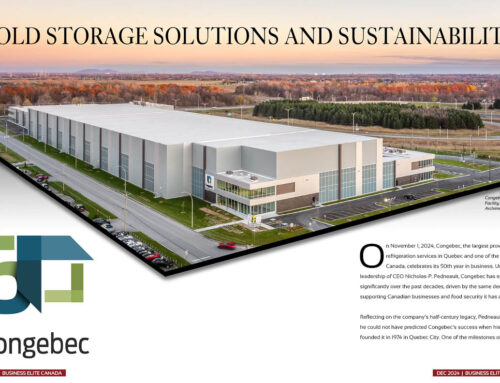Calgary’s Massive P3 Project
By Anna Guy
Since the spring of 2017, Heavy Construction has been underway on the Southwest Calgary Ring Road (SWCRR), the high standard freeway that will provide a critical north-south freeway connector at the west end of the City of Calgary between Highway 8 (or Glenmore Trail) and Highway 22X.
Calgarians are witness to the building of a safer and more efficient corridor for the movement of goods and people in and around Calgary, and one that will result in less traffic across the province. The $2.2 billion P3 project—with a construction cost of $1.42 billion—is projected to generate thousands of jobs in the province over the project’s five-year construction period, making it a vital undertaking both for the present and future of the province.
“The Government of Alberta is building the SWCRR to better serve the people of the province,” explains Rizwan Hussain, Project Director of the Major Capital Projects Branch for the Government of Alberta. “The SWCRR will improve traffic flows and the quality of life, as people will be spending less time stuck in traffic.”
The project details break down like this: 31 kilometres of six- and eight-lane divided highway, 14 interchanges, one road flyover, one railway crossing, 49 bridges, one tunnel, and three river crossings over the Elbow River and Fish Creek designed, built, and partially financed by Mountain View Partners. Mountain View Partners has contracted the design and construction to KGL Constructors, a joint venture partnership between Kiewit, Graham, and Ledcor.
As of July, 2019, project completion is at 60 per cent, with motorists expected to be on the road in fall of 2021.
Tsuut’ina Nation
“This project has been in the planning for decades,” explains Hussain, and is the result of an historic agreement between the Alberta government and the Tsuut’ina First Nation. “Projects like ring roads are complex and require a large amount of land to ensure transportation needs are planned for. Land acquisition with the Nation was very challenging and a result of 45 years of discussions between the First Nation and the Province. The SWCRR will also bring tremendous benefits for the safety, prosperity and success of Calgarians, the Tsuut’ina Nation, and all Albertans.”
The economic impact of the project is hard to underestimate. The project is vital to the long-term transportation and economic success of Calgary and Alberta as a whole. The ring road will also provide improved market access across Calgary, the province, and other parts of Canada
The Tsuut’ina Nation is planning significant development along the ring road and expects these development plans to ultimately result in significant social and economic prosperity to the Tsuut’ina Nation for generations to come.
P3
The Government of Alberta chose to use the P3 model for financing the project to provide opportunities for innovation and adequate risk allocation. “The Government’s goal is to provide a high-level of service to the people of Alberta while ensuring safe and sustainable development and making cost-effective decisions—the SWCRR has and is doing this,” says Hussain. “The P3 model allows savings in project life-cycle costing; high level of certainty in terms of cost and level of service (no deferred maintenance); reduced duration from initiation to completion; successful allocation of project risks.”
Environmentally sensitive areas
Environmental protection is Alberta Transportation’s highest priority and a key component of the Southwest Calgary Ring Road project. The SWCRR alignment was determined using the miss-minimize-mitigate approach in developing and evaluating mitigation alternatives.
Alberta Transportation and the SWCRR Contractor are adhering to the highest environmental standards in the construction of the SWCRR, says Hussain. “In addition, all work is being carried out in accordance with federal and provincial regulations and the SWCRR project design is developed to minimize potential impacts to wildlife, fish and habitat,” says Hussain. “Alberta Transportation is committed to completing the SWCRR project while preserving and protecting the critical wildlife and habitat within project limits.”
A project of this size and scope must be undertaken with enormous care and forethought to protect the environment, produce a proper transportation network, balance financing, and accommodate the city. Hussain and his team are proud of what has been accomplished so far and look forward to the day Calgarians will benefit from the planning that has gone into the project. “It will be a monumental day for us when the project is complete,” says Hussain. “To be able to have a positive impact on the city is something we are honoured to do.”
www.swcrrproject.com






